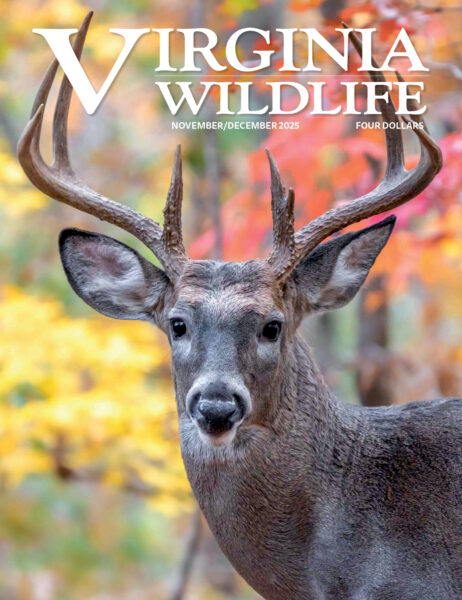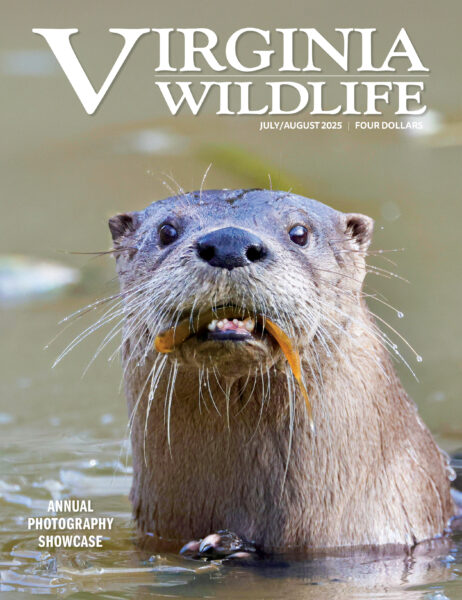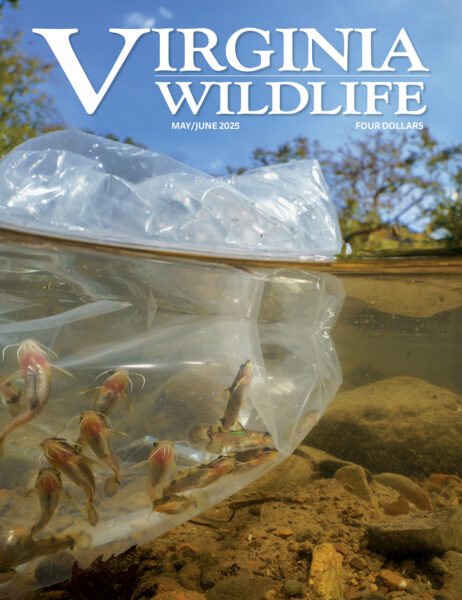Don't put down your camera during the colder months! Textures and patterns are a fun way to hone your skills.
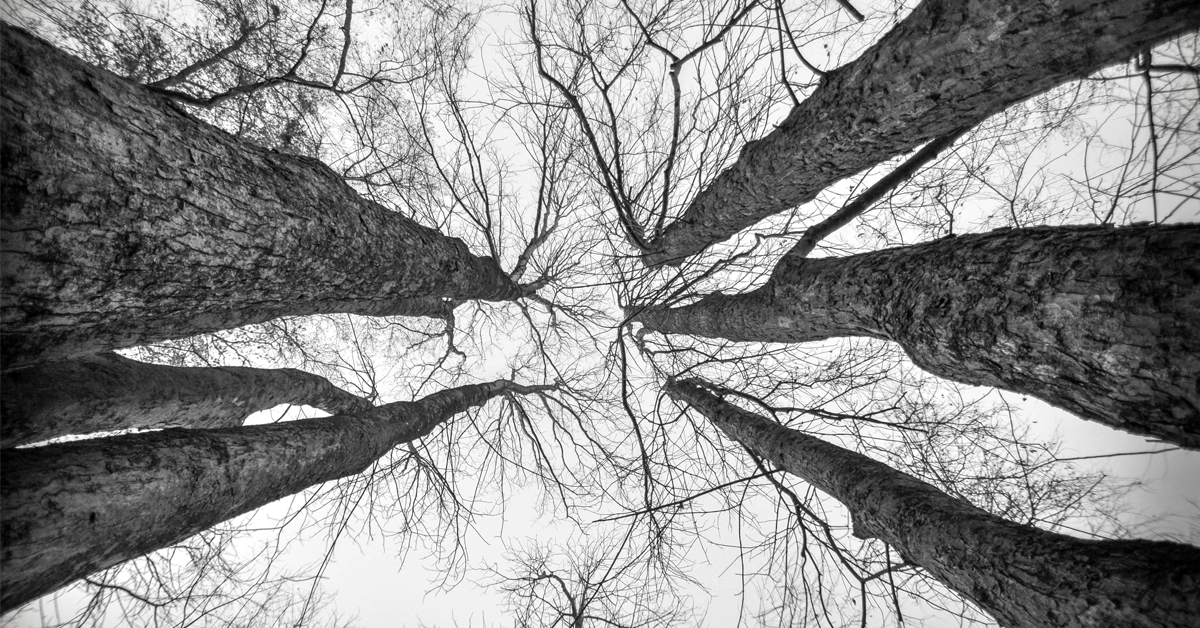
Changing our perspective can result in finding some compelling patterns. Photo by Andrew Knizner
By Lynda Richardson/DWR Art Director
In Virginia, the months of January and February may seem to offer little in photographic opportunities. It’s cold, gray, and sometimes snowy, and not much is happening… or so it seems. If I’m not photographing resident birds drawn to my feeders or snowy landscapes around the state, I just step outside and look around me. A sparse landscape is actually full or intricate patterns and textures just waiting to be photographed if you take the time to look for them.
You don’t need to travel far! I often start out by wandering along the serpentine brick path through my garden. A crisp, gnarly leaf hangs precariously from the limb of a Japanese maple, its twisted form beckoning to be photographed. Texture. The once-splendid, baby blue bracts of a hydrangea shake gently in the chilled air, revealing repeated patterns of tan, tissue-thin, flower-like shapes. Patterns. By looking at your subject matter differently, you will discover a wealth of things to photograph in the winter landscape.
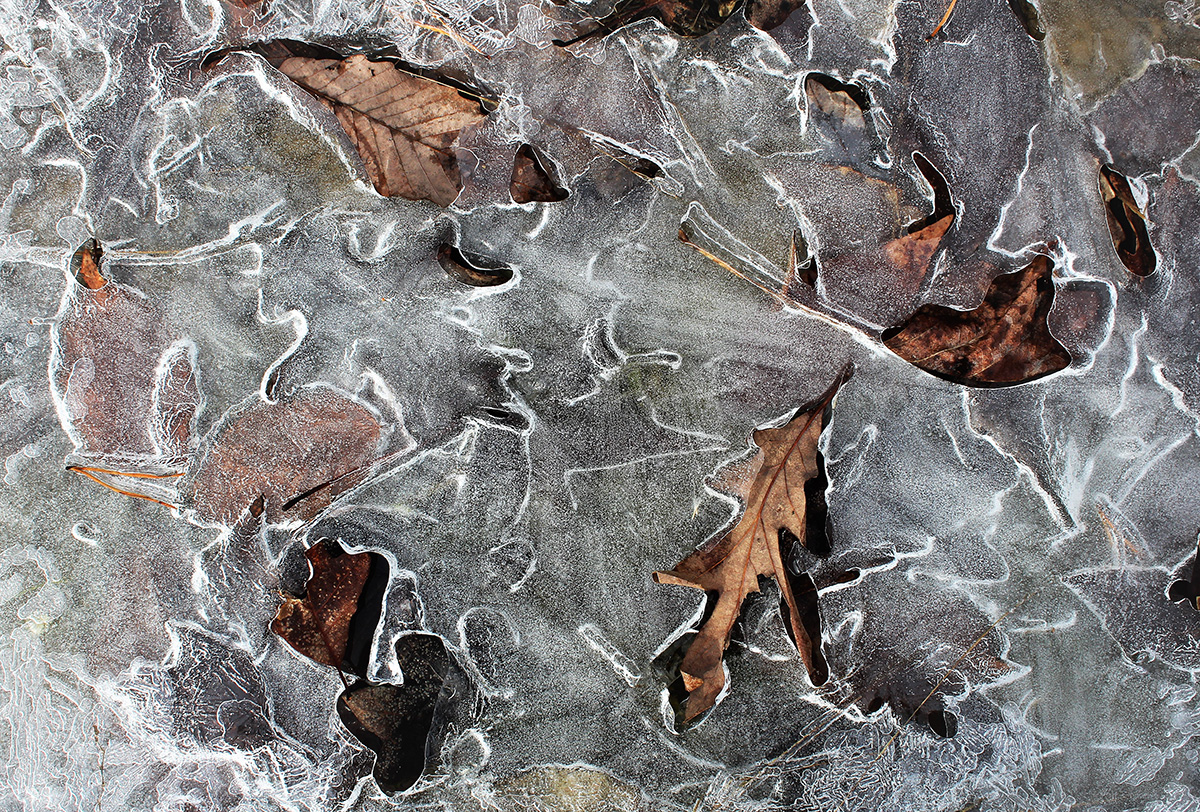
Photo by Linda Alexander
When photographing texture, you want to capture what the surface of your subject is like. Is it smooth, bumpy, gritty, furry, or prickly? How can you photograph to best reveal its texture? Side lighting can greatly assist the photographer in capturing some textures, so consider that as you are shooting. Tree bark offers a lot of choices, from the smooth yet knotty hickory to the deeply grooved oak. Look around and see what you can find.
Patterns are about shapes and lines. One of my favorite things to look for is a pattern repeated. Repeated patterns can be photographed in two different ways—either by emphasizing the pattern or by breaking it. Say, for example, you are photographing a group of similarly shaped gray rocks. You shoot straight over the top of them so the plane of your camera is parallel to their surface. This will keep your depth of field equal throughout the image. Then, fill the frame with them, creating a recurring pattern of just rocks. Suddenly, a brilliant, red black gum leaf falls into the shot. You adjust it a little (and maybe use the “Rule of Thirds” for red leaf placement) and re-shoot the image, with the red leaf breaking the pattern of your rocks. Easy!
When deciding to photograph textures and patterns, begin looking for anything that catches your eye and capture it. You can use any millimeter length lens to do this—macro to wide angle to telephoto! Sometimes I start out by shooting the scene, then I work closer and closer until I figure out what was really drawing my attention to it in the first place.
What is the best way to compose your texture or pattern? Keep in mind the Rule of Thirds for some images, and for others, try simply filling your entire frame with your subject matter. Can you include both textures and patterns in your shot?
Winter may seem like the time to put away your camera, but if you do, you will miss a great opportunity to walk around, get some fresh air, and enjoy the hunt for really cool textures and patterns.
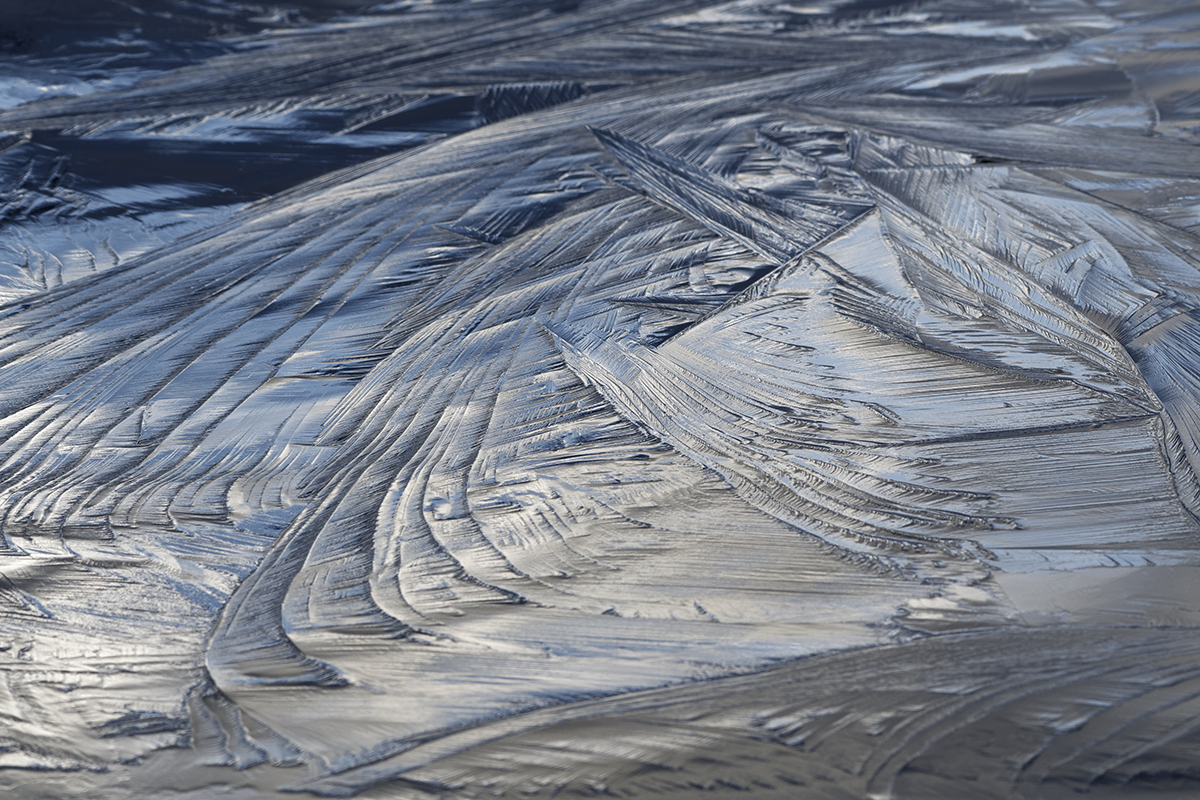
Photo by Charles Gibbens

This article originally appeared in Virginia Wildlife Magazine.
For more information-packed articles and award-winning images, subscribe today!
Learn More & Subscribe


